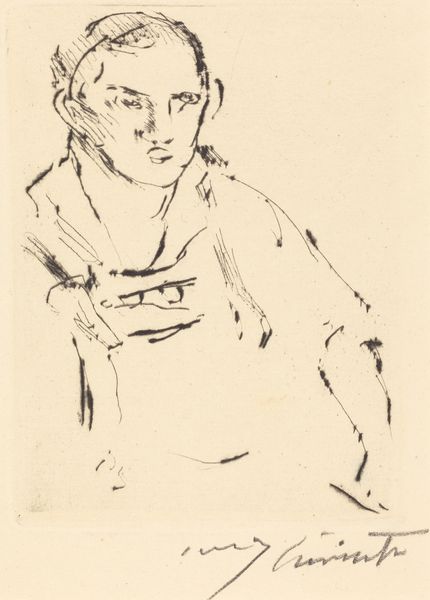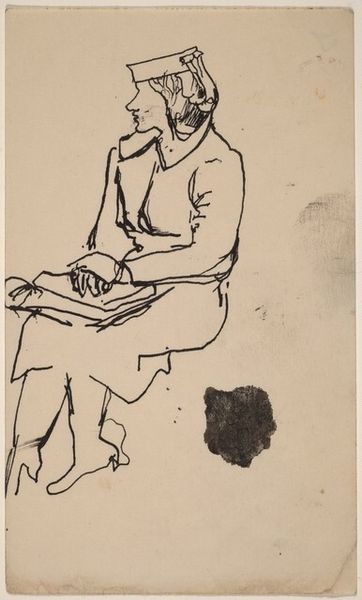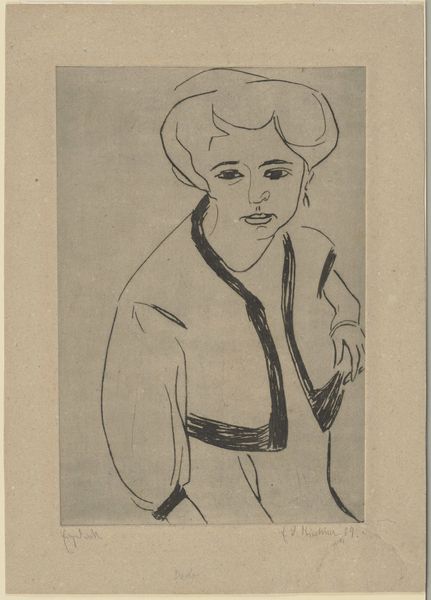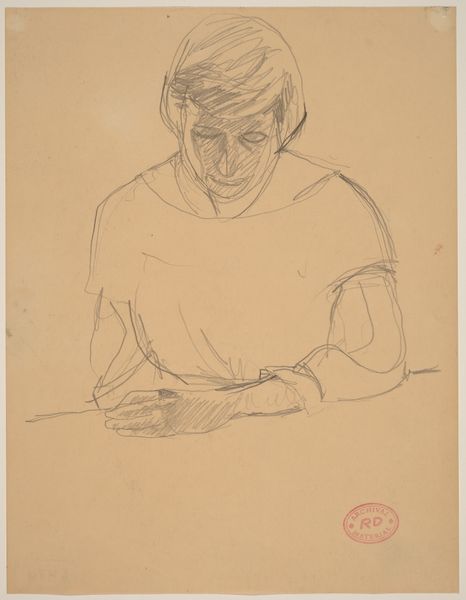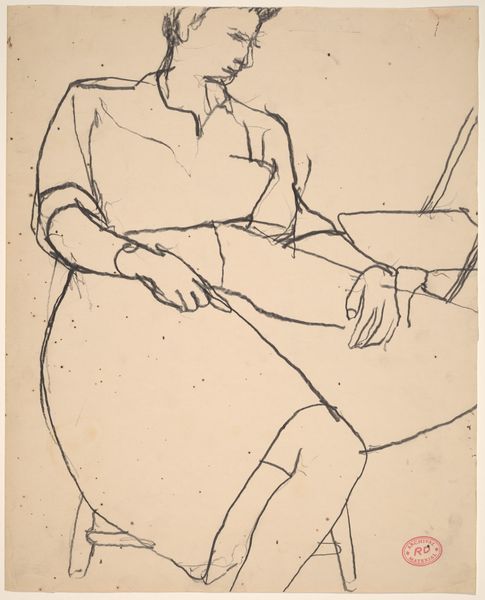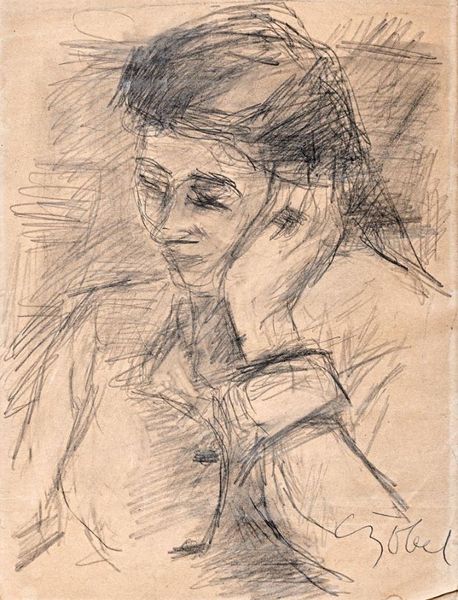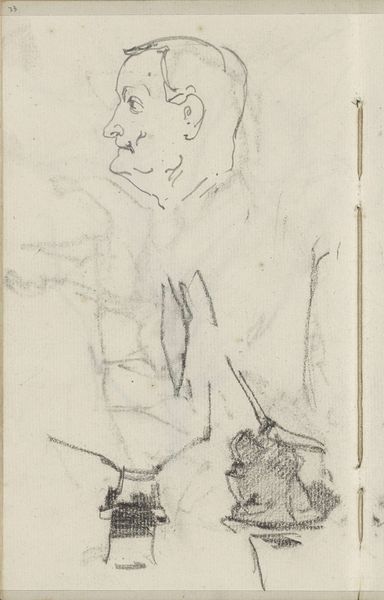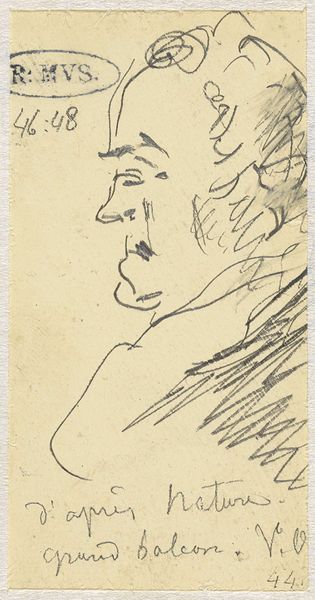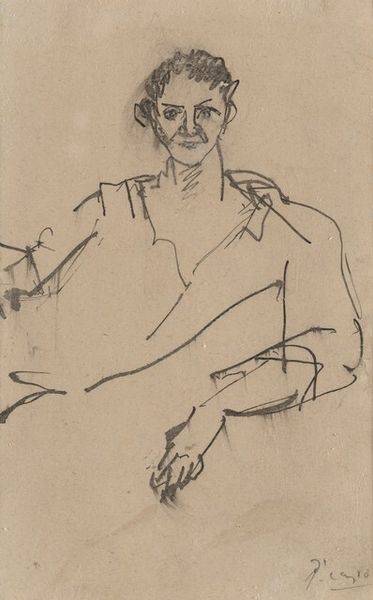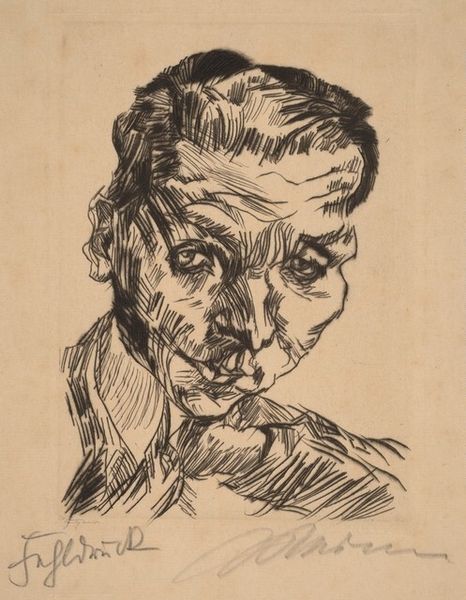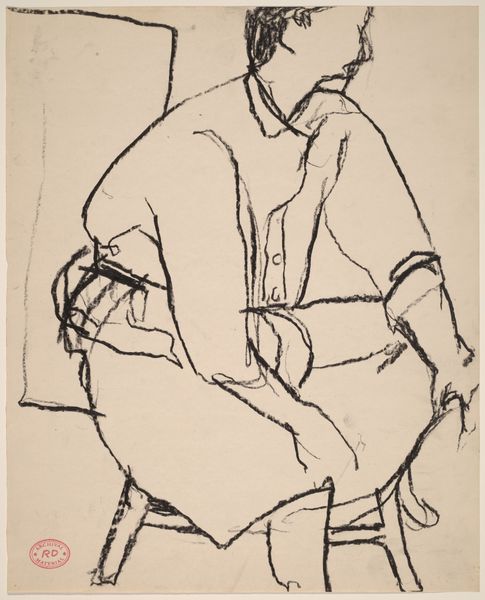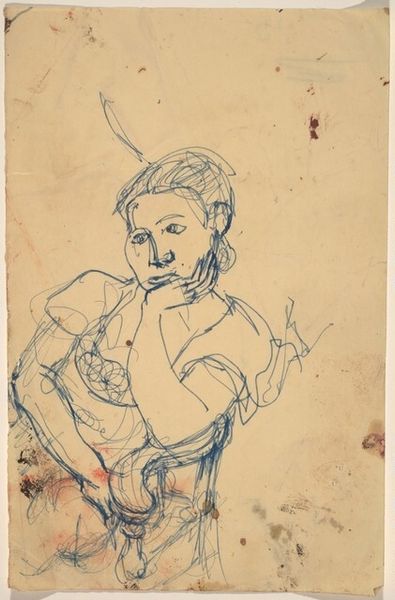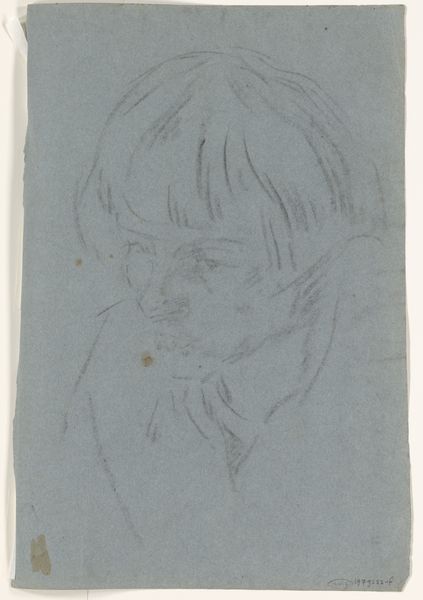
drawing, chalk, charcoal
#
portrait
#
drawing
#
expressionism
#
chalk
#
charcoal
Copyright: Public Domain
Curator: Gosh, she’s so present, isn't she? There's something strikingly direct about her gaze. Editor: Indeed! Let me quickly introduce folks to what we're seeing. This expressive portrait is called "Fridel Battenberg, Halbfigur, sitzend," a half-figure portrait of a seated woman. Max Beckmann rendered it around 1920 using charcoal and chalk. It now resides here at the Städel Museum. Curator: "Expressive" is spot on. It's almost unsettling how the chalk and charcoal capture her… something. Determination? Resignation? Both? It feels very Expressionist. The weight of that time just seems to sink into her posture. Editor: Absolutely. Expressionism was all about externalizing inner emotional states, often turbulent ones. Notice how Beckmann uses harsh, almost brutal lines. The face isn’t idealized, but it is powerfully… there. I'm fascinated by the clasped hands – they’re almost the anchor of the entire piece, so prominent and detailed compared to other areas. Hand gestures throughout art history are deeply coded – do these communicate tension or perhaps an effort to remain calm and contained? Curator: I see the anchor. Those hands feel more important than her face, strangely. And you know, when you see hands rendered like that, all knotted, I start thinking about work, struggle. What did she DO all day? What was on her mind? She seems weighed down somehow, I'd wager. Like a strong current pulling against her. Editor: Well, 1920s Germany… There's a world of socio-economic and political upheaval swirling around her, that's for sure. But then the little details throw me off – that delicate necklace, her neatly styled hair… There's a middle-class solidity, isn't there? A will to maintain appearances amid all the chaos. Curator: Exactly! The "appearance" aspect hits the nail on the head! She is totally present. It makes her more than just another historical portrait. She refuses to just disappear into time. It's kind of defiant, isn't it? Like, "I was here, and I mattered.” I wish I knew her story. Editor: Don't we all? And that’s precisely what good portraiture achieves. It whispers possibilities and leaves us with more questions than answers, connecting the viewer to the silent emotional presence. Curator: It does. Thanks for walking me through that. It's making me think about all those untold narratives tucked away in museum walls. Editor: Indeed, it reminds us of the powerful stories behind every image.
Comments
No comments
Be the first to comment and join the conversation on the ultimate creative platform.
